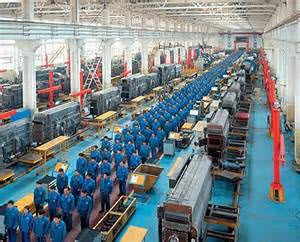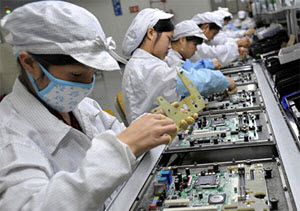Most of us have heard by now that implementing a social compliance strategy is an upstanding and responsible measure to take as a supplier. In addition, perhaps the most important reason for implementation from a business standpoint, you can show your retail clients (e.g. Walmart, Target, etc.) the policies and reporting your company has in place for compliance when they start auditing your factories in China. You can probably even stave off the intrusive and often difficult task of getting your factories through the retailer’s audit system, by taking the initiative to check your factories in advance.
We’ve regularly seen brands and importers, both in the U.S. and internationally, that have been spared the tedium of pesky retailer audits. They accomplish this by presenting to those retailers their own thorough enforcement of social compliance standards, as well as tracking documents, which demonstrate regular visits to the facilities and investigation of worker conditions.
Implementing a social compliance program need not be expensive and complex. Here’s how to get started:
Step 1 – Develop a Social Compliance Program Manual
In order to be able to communicate your social compliance program, both internally and externally, you need to develop a comprehensive manual which will be used as a guideline for various aspects.
The compliance manuals of the large retailers are available publicly such as Walmart's, and those are the standards which most of our clients are generally trying to meet. Therefore, we suggest referring to those retailer manuals which are already in place and widely accepted, when developing your own guidelines.
The fact is that nearly all major retailer and brand social compliance program manuals are based on the same, internationally recognized, SA8000 standards. There are other major frameworks for compliance, such as ICTI, WRAP or BSCI, but SA8000 is one of the earliest established and most recognized frameworks for social compliance in the industry.
Any detailed social compliance program manual should include the following parts:
1) Company Code of Conduct
2) Auditing Procedures – these often include:
a) Audit Itinerary
b) General Audit Procedures
c) Factory Walk Through Procedure
d) Employee Interview Process
e) Document Review Process
f) Guidelines for Addressing Specific Situations
g) Zero-Tolerance Policies
h) Required Auditor Experience and Qualifications
i) Requested Document List
j) Employee Interview Questionnaire
3) Auditing Criteria
4) Sample Auditing Report
5) Sample Corrective Action Plan
In many cases, examples of the above documents can be found online. However, if you need help creating this kind of documentation, feel free to contact us.
Step 2 – Introduce the Standards to Your Suppliers and Start Monitoring Regularly
Ideally, you can travel to China and introduce your compliance standards to your suppliers in person. You should also let factories know very clearly that this kind of policy is being implemented so that they can prepare for, and possible avoid, more difficult, external audits down the road.
 Once your suppliers feel at ease with the standards that you’re implementing, you should begin a program of regular visits to their facilities simply to review the existing status of social compliance.
Once your suppliers feel at ease with the standards that you’re implementing, you should begin a program of regular visits to their facilities simply to review the existing status of social compliance.
Most of our clients choose to visit each supplier quarterly but, depending on your situation, you may also decide to visit suppliers once every six months. You can conduct the visits with your own staff in China, or you can contact a third party to assist you.
In any case, by limiting the number of times you visit the supplier each year, you can keep your costs low. However, it's important to be effective, by regularly collecting accurate data, and monitoring properly, and that is what your clients want to see.
With each visit to a facility, we suggest assigning a rating to the supplier based on your observations, such as a Green, Yellow, Orange or Red rating (in-line with Walmart’s standards).
Compile and maintain the data from each visit into a “Supplier Social Compliance Tracking Sheet” and review this sheet regularly to monitor suppliers with severe issues.
Step 3 – Working with Factories that have the Most Severe Issues
Although the above strategy gives your company the internal policies and regular reporting that most retailers want to see, it doesn’t guarantee regular improvement at the facility. That said, we’ve seen that once a company formalizes its policies and starts to pay regular visits to suppliers for the purpose of verifying that social compliance initiatives are being enforced, many Chinese factories will start to make improvements on their own.
If you’re still not getting the desired results, you need to help the supplier to improve – which may include hiring an outside consultant and, in some cases, helping the factory pay for necessary structural improvements – or walk away. Both of which can be costly.
If there are no pending audits from your clients, you may be able to put off such improvements. However, by regularly visiting your suppliers and showing your clients that you have a policy in place and are willing to work with the factories to improve, you’ll already be ahead of the game.
Conclusion
Implementing a social compliance strategy not only demonstrates ethical responsibility, it can also benefit your business by preparing your suppliers for a possible audit from your clients, which can be both tedious and difficult to pass. Many manufacturers can reduce the frequency of formal audits from retailers such as Walmart and Target by defining & enforcing compliance standards through periodic visits and thorough documentation.
How to initiate your own social compliance program:
 Step 1 – Develop a comprehensive program manual that details each of your social compliance requirements and measures. A program manual should be communicable both internally & externally, and can be modeled after existing SA8000 standards – already widely adopted by many major brands.
Step 1 – Develop a comprehensive program manual that details each of your social compliance requirements and measures. A program manual should be communicable both internally & externally, and can be modeled after existing SA8000 standards – already widely adopted by many major brands.
Step 2 – Introduce your new compliance standards to suppliers and start monitoring their improvement regularly. We recommend you visit your factories at least twice a year to verify implementation. Record data from factory visits in a tracking sheet to check progress.
Step 3 – Work with your factories to find solutions for more severe issues. You may need to put forth significant investment by hiring a consultant or paying for structural improvements, in order to comply with standards. If you aren’t willing to help a supplier in some cases, be prepared to walk away and find a supplier that CAN meet your standards.






